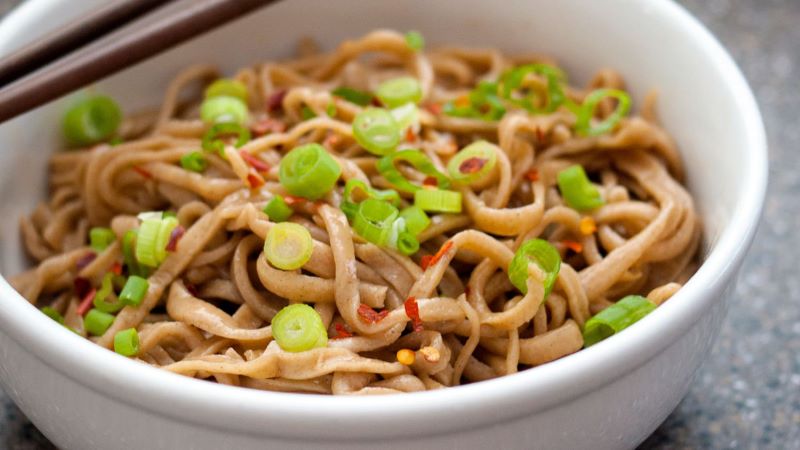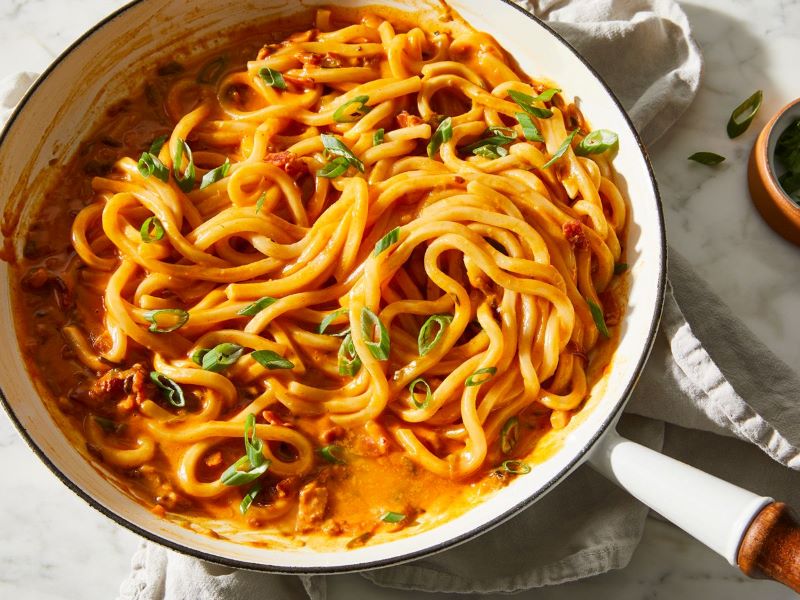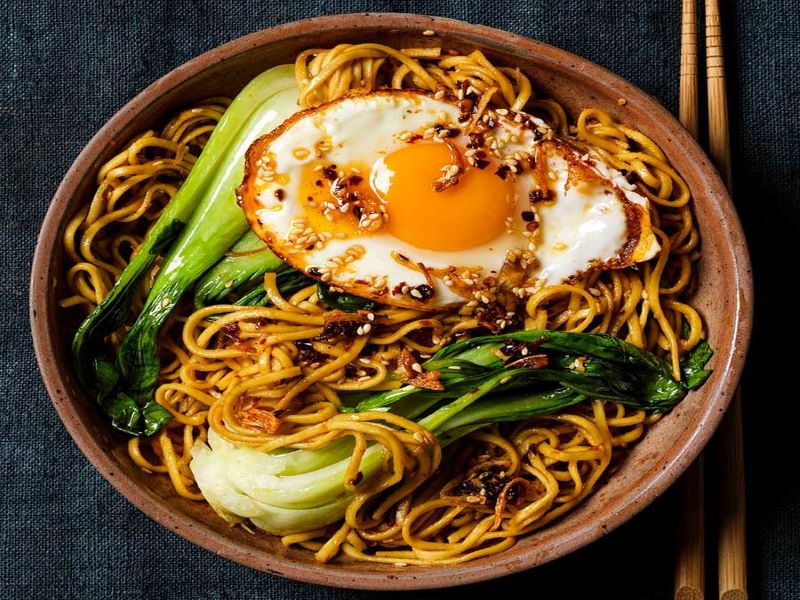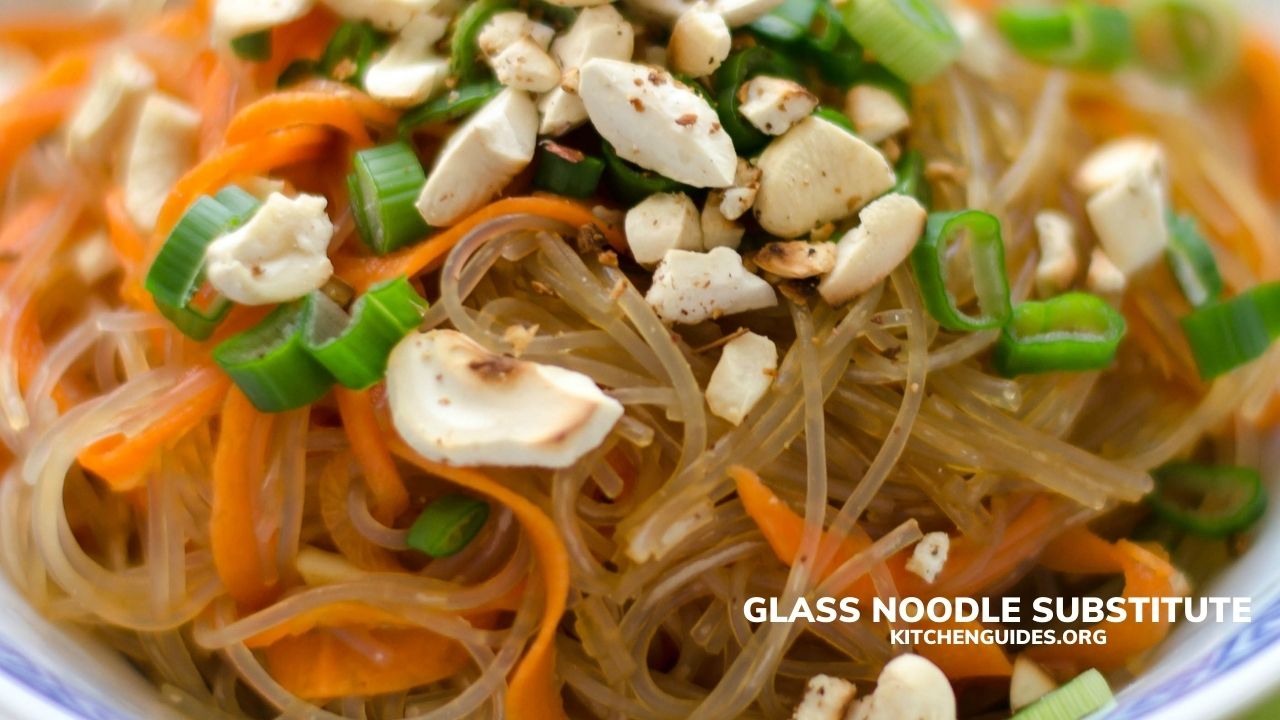This article explores what the Glass Noodle Substitute is and how to use it to create your glass noodle dish. It will also help you understand the health benefits of glass noodles, as well as their nutritional value.
A Glass Noodle: What is it?
A glass noodle, also known as a transparent noodle or cellophane noodle, is a type of food made with mung bean starch and water. It is usually clear but can be colored with food coloring.
Glass noodles are sold dried in packages that contain about 10 to 20 pieces. They must be soaked in water for about 30 minutes before cooking; after which they will expand to several times their original size. They are then cooked by boiling or stir-frying in oil or water. Glass noodles can be used as an ingredient in soups and stir-fries, or served as a side dish with meat dishes such as chicken, pork, or beef.
10 Best Substitutes For Glass Noodle
Glass noodles, also known as cellophane noodles or bean threads, are a type of translucent noodle made from starch and water. They’re often used in Asian cooking as a substitute for rice vermicelli or other types of noodles. Glass noodles can be made from mung bean starch, sweet potato starch, or tapioca starch.
Glass noodle substitutes are available at most Asian markets and some supermarkets. They’re typically packaged in plastic bags and sold in small quantities for about $1 per bag. The most common varieties include:
1. Soba Noodles

Soba is thin Japanese wheat noodles that are usually served cold, but they can also be served hot with dipping sauces or other toppings.
2. Udon Noodles

Udon is thick Japanese wheat noodles that have a chewy texture when cooked. Like soba, udon is often served cold with dipping sauces or other toppings.
3. Rice Vermicelli/Rice Sticks
Rice vermicelli is similar to glass noodles except that it contains no gluten and has a slightly crunchy texture when cooked. Rice sticks look like glass noodles but have more of a bite to them when cooked; they are often used in stir-fry dishes and soups because they don’t need to be softened before being added to the pot.
4. Rice Noodles
Rice noodles are a great alternative to glass noodles. They are made from rice flour, water, and salt. The noodles can be bought fresh or dried, in the same way as you would buy glass noodles. Rice noodles are thicker than glass noodles, but they do have the same translucent quality. Rice noodles can be used in all of the same recipes as glass noodles, including soups and stir-fries.
5. Bean Threads
Bean threads are also known as cellophane noodles or glass noodles. They are made from mung beans, which are soaked and then ground into a fine flour. The flour is then mixed with water and formed into long strands that can be cut into smaller pieces for cooking. Bean threads have a slightly crunchy texture when cooked and are often used in Asian dishes. They can be found in dried form in the Asian section of most supermarkets or at Asian grocery stores.
6. Egg Noodles

Egg noodles are made from flour, eggs, and salt that are kneaded together and rolled out into a long flat sheet before being cut into noodle shapes using a special machine called a pasta cutter. Egg noodles come in different thicknesses (e.g., thin, medium, or thick) depending on how much water was added during their production process; the more water added, the softer the noodle will be once cooked.
7. Ramen/Buckwheat noodles
Ramen and buckwheat noodles are two types of thin Japanese wheat flour noodles, which are made from whole grain flour and water. They are similar to glass noodles but have a slightly different texture and taste than them. You can use these two types of Japanese wheat flour noodles as a substitute for glass noodles in stir-fries, soups, salads, or even soups!
8. Couscous
Couscous is pasta made from semolina, coarse flour ground from durum wheat. It is used in many cuisines, but it is best known as the traditional side dish for Moroccan cuisine. It’s also the national dish of Tunisia and Algeria, where it’s called ‘kasra’ or ‘Koch’.
9. Thin Spaghetti/Spaghettini
Thin spaghetti or spaghettini is thin, smooth, and narrow strands of pasta that are usually sold alongside other varieties of spaghetti. They’re traditionally served with light sauces that don’t overpower their delicate flavor and texture.
10. Shirataki Noodles
Shirataki noodles are made from konjac yam flour and water. They’re gluten-free and low in calories, but they still taste like traditional noodles. They come in several different shapes and sizes — including rice stick form — so they’re great for making stir-fries or even lasagna!
How To Prepare Glass Noodles At Home
Glass noodles are a type of Chinese noodles that is made from mung beans. They’re often used to substitute for rice noodles and wheat flour. Glass noodles are popular in Thai, Vietnamese and Chinese cuisine, as well as in some parts of Southeast Asia.
The preparation process for glass noodles is simple and quick. You can find them at most Asian grocery stores or specialty stores that sell Asian food products.
Here’s how to prepare glass noodles at home:
Step 1: Remove the packaging from the glass noodles package.
Step 2: Rinse the glass noodles under cold water until all of the starch is removed from them.
Step 3: Place the glass noodles into a pot of boiling water and cook them for about one minute.
Step 4: Drain the excess water from your pot using a strainer or colander before serving them hot or cold with any dish you like!
3 Recipe With Glass Noodles
Glass Noodles are the perfect ingredient to add to any dish. They are a great alternative to rice and other carbohydrate-heavy ingredients. Glass noodles can be used in soups, stir-fries, salads, and even desserts! They are also gluten-free, low carb, and a good source of fiber.
Here are some of my favorite glass noodle recipes:
1. Glass Noodle Soup with Chicken & Bok Choy
This is a simple and delicious dish that can be prepared quickly on a weeknight. The chicken broth is infused with ginger and garlic, which adds great flavor to the noodles. The bok choy adds color and crunchiness to this dish while giving it an extra dose of nutrition.
2. Glass Noodle Stir Fry with Beef, Bok Choy & Snow Peas
his recipe uses them as an ingredient and a noodle substitute — they’re perfect for stir-fries. This glass noodles stir fry is made with beef, bok choy, and snow peas. If you want to add more vegetables, feel free to add mushrooms or bell peppers.
3. Glass Noodle Salad with Tofu, Edamame, And Cucumbers
Glass noodles are a great substitute for pasta, especially if you’re trying to eat more veggies and fewer carbs. They’re made from mung beans and have a light, springy texture that is perfect for this summer salad. This recipe is also low carb, vegan and gluten-free!
FAQs
1. Are they gluten-free?
Yes! Glass noodles are made from potato starch, so they are naturally gluten-free.
2. How long do they last?
Glass noodles should be stored in an airtight container away from heat and light so that they last as long as possible. If properly stored, they can last up to 6 months in the pantry and up to 1 month in the refrigerator after opening.
3. Where can I buy glass noodles?
You can purchase glass noodles online from Amazon or from Asian grocery stores that sell imported foods like Eden Foods and Asian Food Grocer. If you’re lucky enough to live in an area where there’s an authentic Asian market, you may be able to find them there too — though this isn’t always guaranteed.
4. What is the best way to store glass noodles?
Glass noodles can be stored in an airtight container or jar in the pantry for up to six months. They should be kept away from heat and humidity to prevent spoilage. If you buy them in bulk or have leftovers, use a freezer bag and freeze them for up to six months. You can also store them in the refrigerator for up to one week if you do not use them right away.
5. What is the best way to cook glass noodles?
You can cook glass noodles by boiling them in water until cooked through (about 5 minutes). You can also add them directly into soups or stir-frys after cooking meat or vegetables so there’s no need to boil them separately first and then add them into soup/stir fry later on (about 3-4 minutes).
In Summary
This glass noodle substitute is a tasty side dish or food filling that mimics the glass noodle’s soft, flexible, and slippery texture of the real thing. It is quick to make and delicious!
